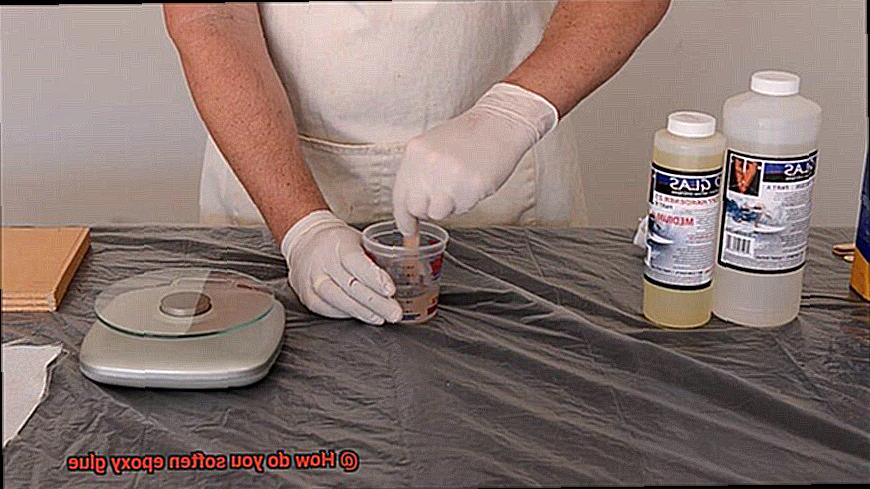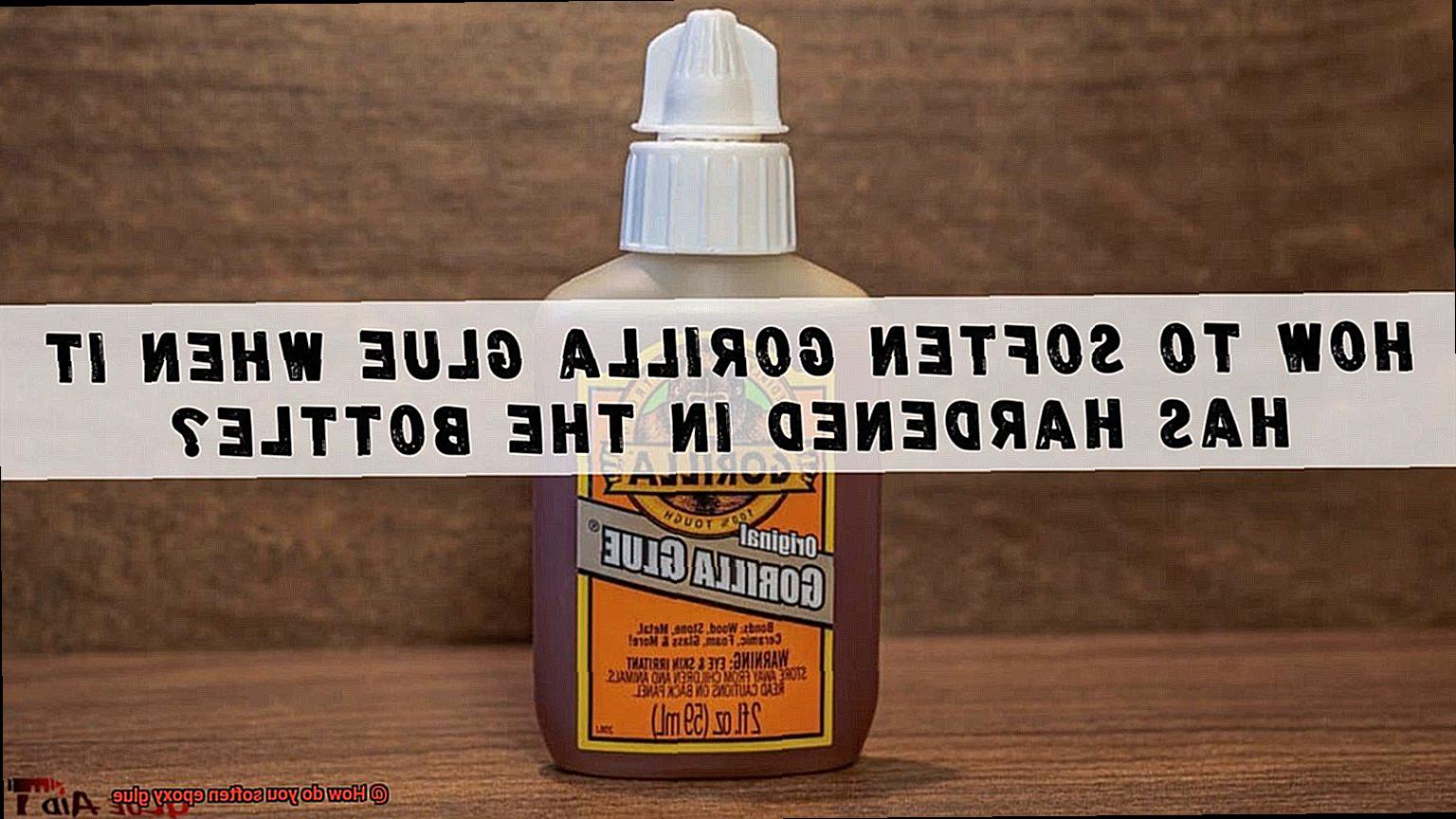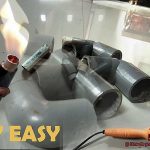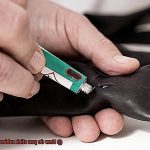Are you tired of battling with rock-hard epoxy glue that won’t budge no matter how hard you try? Whether it’s on your car, boat, or DIY project, removing stubborn epoxy residue can be a frustrating and time-consuming chore. But what if we told you that there’s a simple way to soften and eliminate epoxy glue with minimal effort?
Luckily for you, we’re here to share the top techniques for softening epoxy glue and making your life easier. From utilizing heat and solvents to sanding and scraping, there are various methods that you can experiment with to soften epoxy glue. However, keep in mind that not all methods work for every type of epoxy glue. Therefore, it’s essential to choose the one that fits your specific needs.
In this blog post, we’ll dive into the most efficient ways to soften epoxy glue. We’ll cover everything from the necessary materials and tools to the proper steps to follow. We’ll also provide some safety tips and cleanup tricks to ensure that you’re using these methods safely and efficiently.
So whether you’re a seasoned mechanic, an avid DIY enthusiast, or just someone looking to remove pesky epoxy glue from your belongings, keep reading to discover the best way to do it.
What is Epoxy Glue?
Contents
Epoxy glue is a remarkable adhesive that has revolutionized various industries, from construction to electronics. This powerful adhesive is made up of two components: resin and hardener, which react chemically to create a robust bond. The result is an adhesive that is durable, strong, and resistant to heat, water, and chemicals.
One of the most significant advantages of epoxy glue is its ability to fill gaps and cracks. This makes it perfect for repairing damaged surfaces or joining two mismatched parts together. Whether you are a DIY enthusiast or a professional contractor, epoxy glue is an essential tool that enables you to make strong and long-lasting bonds.
However, epoxy glue’s strength and durability can sometimes be a double-edged sword. Once it has cured, it can be challenging to remove or soften, making it difficult to make adjustments or repairs. But fear not. There are several methods for softening epoxy glue that can help you work with this adhesive with ease.
One way to soften epoxy glue is by using heat. Applying heat to the bonded area can help loosen the bond and make it easier to remove. This method is particularly effective for low-temperature epoxies, which can soften at temperatures as low as 120°F. However, applying too much heat can damage the underlying material, so caution is essential.
Another method for softening epoxy glue is by using solvents. Acetone, alcohol, and vinegar are solvents that can dissolve epoxy by breaking down the chemical bonds that hold the adhesive together. It is crucial to test a small area first before applying the solvent to the entire bonded area.
If you prefer mechanical methods for removing or softening epoxy glue, sandpaper or a grinder can do the trick. These tools allow you to remove the top layer of epoxy, exposing the softer layer underneath.
Types of Epoxy Glue
When it comes to bonding materials, epoxy glue is a top choice for many due to its strength, durability, and resistance to chemicals and temperature. However, not all epoxy glues are created equal. There are different types of epoxy glue available in the market, each designed for specific applications. Here are the five main types of epoxy glue and their specific uses:
Standard Epoxy Glue
Standard epoxy glue is the most common type of epoxy glue available. It has a strong bond and can be used on various surfaces such as metal, wood, plastic, and ceramics. This type of epoxy glue is ideal for general repairs around the house, such as fixing broken furniture, toys, or household appliances.
Structural Epoxy Glue
Structural epoxy glue is specifically designed for heavy-duty applications such as construction and engineering projects. It has a high strength and can withstand extreme temperatures and pressure. This type of epoxy glue is ideal for bonding metal, concrete, and other materials used in construction projects.

Marine Epoxy Glue
If you’re repairing boats, canoes or any watercraft, marine epoxy glue is the perfect solution. As the name suggests, it is used in marine applications and is water-resistant. It can withstand exposure to saltwater without losing its bond strength.
Food Safe Epoxy Glue
In food preparation areas where bonding kitchen utensils or cutting boards is necessary, food safe epoxy glue is the best choice because it is non-toxic and can withstand high temperatures.
UV Resistant Epoxy Glue
UV resistant epoxy glue is ideal for outdoor applications since it can withstand exposure to sunlight without yellowing or deteriorating. This type of epoxy glue is perfect for bonding outdoor furniture, garden ornaments, and other outdoor items.
Conductive Epoxy Glue
Conductive epoxy glue is specifically designed for electronic components since it has high conductivity and can bond electronic circuits and components. This type of epoxy glue is ideal for repairing or building electronic devices.

Softening Epoxy Glue with Heat
There’s a solution that can save you time and effort: softening epoxy glue with heat. This is a popular technique used by many professionals and DIY enthusiasts to weaken the bond between the epoxy and the surface it has been applied to.
To start, make sure you have the right tools – a heat gun or hairdryer will do the job perfectly. But before applying heat, try mechanically loosening the epoxy with a scraper or chisel. This will help break up any hardened epoxy and make it easier to soften with heat.
When heating up the glue, remember to start at a low temperature and gradually increase it until you reach the desired softness level. Overheating can cause the glue to melt and become even harder to remove. Keep the heat source at a safe distance from the surface to avoid overheating and causing damage.
It’s also essential to wear protective gloves and safety glasses when using heating tools. Safety should always come first.
Softening Epoxy Glue with Solvents
Don’t stress. Softening the glue with solvents is a simple solution that many experts use. Three main solvents are commonly used for softening epoxy glue: acetone, denatured alcohol, and vinegar.
Acetone is a potent solvent that dissolves the epoxy resin, making it more pliable and easier to remove. However, it can also dissolve other materials, so it should be used with caution. To soften epoxy glue with acetone, soak a clean cloth in acetone and place it over the glued area for several hours or overnight. Then, use a scraper or knife to gently remove the softened epoxy.
Denatured alcohol is a less harsh solvent than acetone, making it less likely to damage surrounding materials. To use denatured alcohol for softening epoxy glue, wet a clean cloth with it and place it over the glued area for several hours or overnight. Once the epoxy has softened, use a scraper or knife to gently remove it.
For a milder solvent that is safe for most surfaces and doesn’t emit harmful fumes, vinegar is your go-to option. Heat some vinegar in a microwave-safe container until warm (but not boiling), dip a clean cloth into it and place it over the glued area for several hours or overnight. Then, use a scraper or knife to gently remove the softened epoxy.
It’s important to remember that not all types of epoxy adhesives will respond to solvents in the same way. Additionally, using solvents to soften epoxy glue can be time-consuming and messy. If possible, try to avoid using epoxy glue in situations where it may need to be removed or repositioned.
Mechanical Methods for Softening Epoxy Glue
Removing stubborn epoxy glue can be a challenging task, but fear not, as there are effective mechanical methods for softening the adhesive. These methods involve using various tools and techniques to break down or physically remove the glue. Let’s explore some of these methods.
One common approach is to use a heat gun or hair dryer to soften the epoxy. This method can be useful for larger areas of epoxy, but it is crucial to exercise caution when using heat as it can also damage the surface underneath. It’s advisable to avoid overheating the surface and take breaks to allow the surface to cool down.
Another effective mechanical method is to use a sanding tool or abrasive material to grind away the epoxy. This method works well for thick layers or stubborn spots of epoxy that cannot be removed with a scraper. However, when using abrasive materials, it’s essential to wear protective gear such as goggles and a respirator to protect against harmful dust.
For smaller areas of epoxy, a rotary tool or Dremel can be used to carefully grind away the adhesive. Precision and patience are vital when employing this method as it may take some time to remove the epoxy without damaging the surrounding area.
In summary, mechanical methods for softening epoxy glue can be highly effective, but they require careful handling and attention to detail. Choosing the right tools and techniques for the job is key to achieving success. Always take safety precautions when using abrasive materials or heat sources and wear protective gear.
Benefits of Softening Epoxy Glue
Softening epoxy glue might just be the solution you’ve been looking for. This technique offers numerous benefits that can make your project work easier, more efficient, and even improve the longevity of your materials.
One of the primary benefits of softening epoxy glue is increased flexibility in adjusting the placement of glued materials. This is particularly useful in precision-based projects such as woodworking or jewelry making. By softening the glue, you gain more control over the placement of materials, which can save you time and money by avoiding costly mistakes.
Another benefit is that it makes the removal process much easier. Removing hardened epoxy glue can be a daunting task that requires a lot of effort and time. However, by softening the glue first, it becomes much easier to remove without damaging surrounding materials. This is especially helpful when repairing damaged pieces or salvaging projects that have been glued incorrectly.
Softening epoxy glue can also prolong the life of your materials. Hardened epoxy glue can become brittle over time, leading to cracks and other damage. By softening the glue and removing or repositioning it, you can prevent further damage from occurring and extend the lifespan of your materials.
In addition to these benefits, softening epoxy glue also allows for better bonding capabilities in certain situations. For example, if you are trying to glue two pieces of wood together but they are not perfectly aligned, softening the epoxy glue can help create a stronger bond by allowing the materials to settle into place before hardening.
Potential Risks of Softening Epoxy Glue
While it can be a useful technique, it’s important to understand the potential risks involved. Softening epoxy may not always lead to desirable outcomes, and improper techniques can result in dangerous consequences.
Firstly, softened epoxy may not bond as strongly as it did before. This could compromise the integrity of whatever you were holding together, leading to potential safety hazards or costly mistakes. Whether you’re working on a sculpture or fixing a household item, weakened bonds can spell disaster.
Additionally, if the epoxy was used to seal or protect something, softening it could leave that object vulnerable to damage or corrosion. Imagine spending time and money on waterproofing a surface, only to have it compromised by an improperly softened epoxy. The resulting damage could be costly and time-consuming to repair.
Another risk is that some methods of softening epoxy can be dangerous if not done properly. Heating the epoxy can release toxic fumes, and using chemicals like acetone or alcohol can be flammable and cause skin irritation. In extreme cases, these methods could even pose health risks. It’s essential to take proper safety precautions when attempting to soften epoxy, like wearing gloves and a mask and working in a well-ventilated area.
It’s also worth noting that softening epoxy may not always be necessary or effective. In some cases, it may be better to simply remove the old epoxy and reapply fresh glue rather than trying to soften and rework the existing bond. This can save time and reduce the risks associated with softening.
Finally, consider any warranties or guarantees on products before attempting to soften or alter them in any way, as doing so could void those agreements. It’s always best to err on the side of caution when dealing with potentially hazardous substances.
Tips for Softening Epoxy Glue Successfully
Epoxy glue is a widely used adhesive in many industries, but there are times when it needs to be softened or removed. Whether it’s for repairs or modifications, successfully softening epoxy glue requires the right tips and techniques. Here are five sub-sections with expanded explanations on how to soften epoxy glue successfully.
Heat
Applying heat to epoxy glue can help break down its bond, making it easier to remove. You can use a heat gun or hairdryer to heat the bonded area for several minutes until the epoxy softens. Then, use a scraper or putty knife to remove the softened epoxy. Be careful not to overheat the area as this can damage the underlying material. Always wear protective gloves when handling hot surfaces.
Solvents
Various solvents can dissolve epoxy glue, making it easier to remove. Acetone, rubbing alcohol, and vinegar are common solvents that can be effective. However, not all solvents are safe for all materials, so be sure to test a small area first before applying the solvent to the entire bonded area. Soak a cloth in the solvent and apply it to the epoxy glue. Allow it to sit for several minutes before attempting to remove the softened epoxy.
Mechanical Methods
Using mechanical methods can also help soften and remove epoxy glue. Sanding or grinding the area with the epoxy can break down its bond and make it easier to remove. Alternatively, using a drill or rotary tool with an abrasive attachment can also break down the bond. This method requires patience and skill, as you need to be careful not to damage the underlying material.
Chemicals
There are specialized chemicals available that can soften and dissolve epoxy glue effectively. These include methylene chloride and dimethyl sulfoxide (DMSO). However, these chemicals can be hazardous and should only be used by professionals with proper safety equipment.
Patience and Safety Precautions
It is essential to take necessary precautions when attempting to soften or remove epoxy glue. Wear protective gloves and eye gear, work in a well-ventilated area, and follow all safety instructions for any chemicals or equipment used. When softening epoxy glue, remember that patience is key. It may take several attempts with different methods before the glue softens enough for removal.
nykfgrhiwnQ” >
Conclusion
In conclusion, dealing with stubborn epoxy glue can be a daunting task. But fear not, with the right techniques and tools, you can soften and remove it with ease. Whether you opt for heat, solvents, or mechanical methods, it’s crucial to choose the approach that best suits your needs.
It’s important to note that not all epoxy glues are created equal. Different types of adhesives serve specific purposes, so understanding what kind of epoxy glue you’re working with is vital in selecting the appropriate removal method.
Softening epoxy glue can make your project work smoother and more efficient by allowing greater flexibility in adjusting glued materials’ placement while also extending their lifespan. However, there are potential risks involved. Weakened bonds may compromise the integrity of whatever you were holding together and leave objects vulnerable to damage or corrosion. Some softening methods can also pose a danger if not executed correctly.
To avoid any mishaps when attempting to soften or remove epoxy glue, taking necessary precautions such as wearing protective gear and working in a well-ventilated area is essential. Patience is also key as it may take several attempts using different approaches before achieving success.
Overall, following these tips and techniques for safely and efficiently softening epoxy glue can save time and effort on your next DIY project or repair job.






